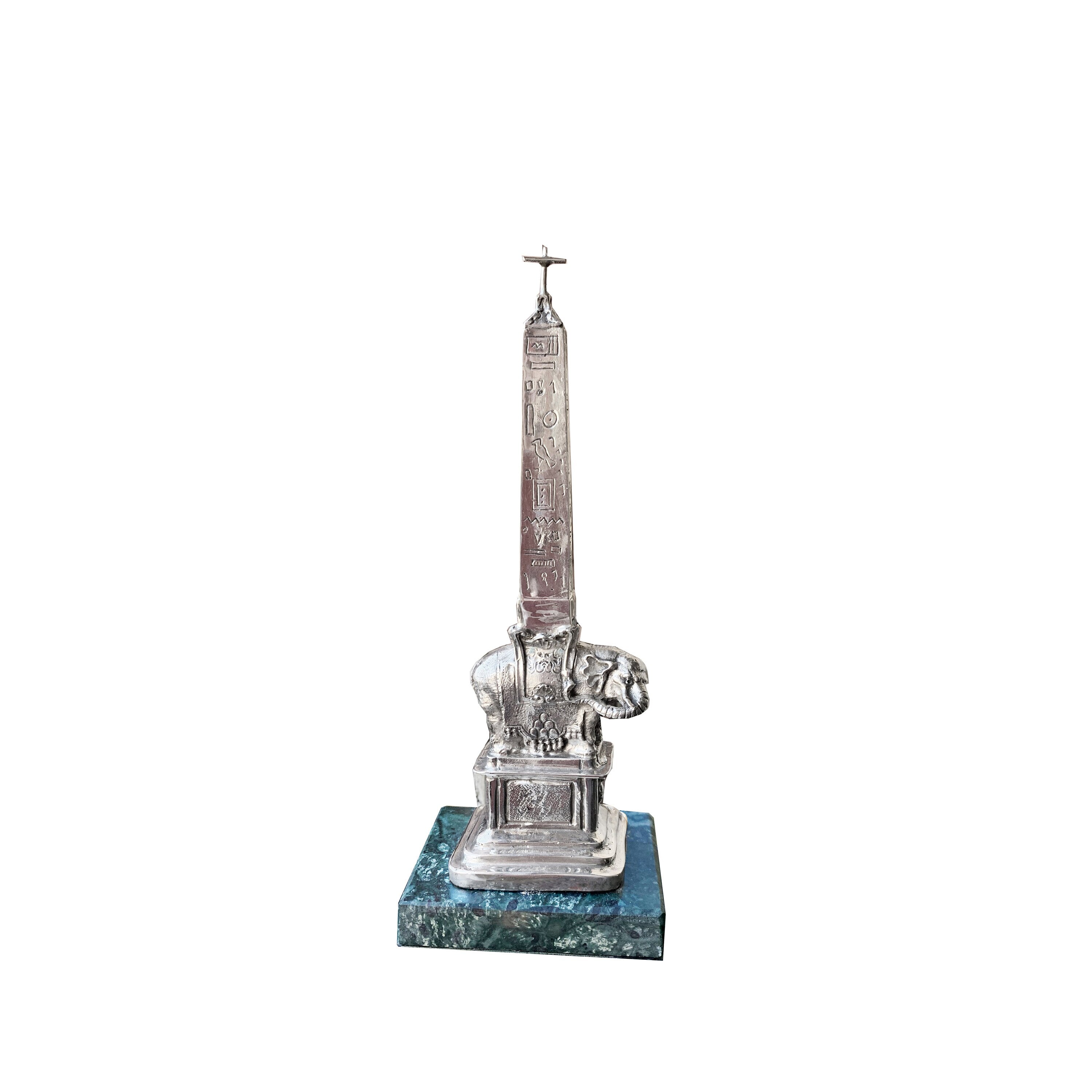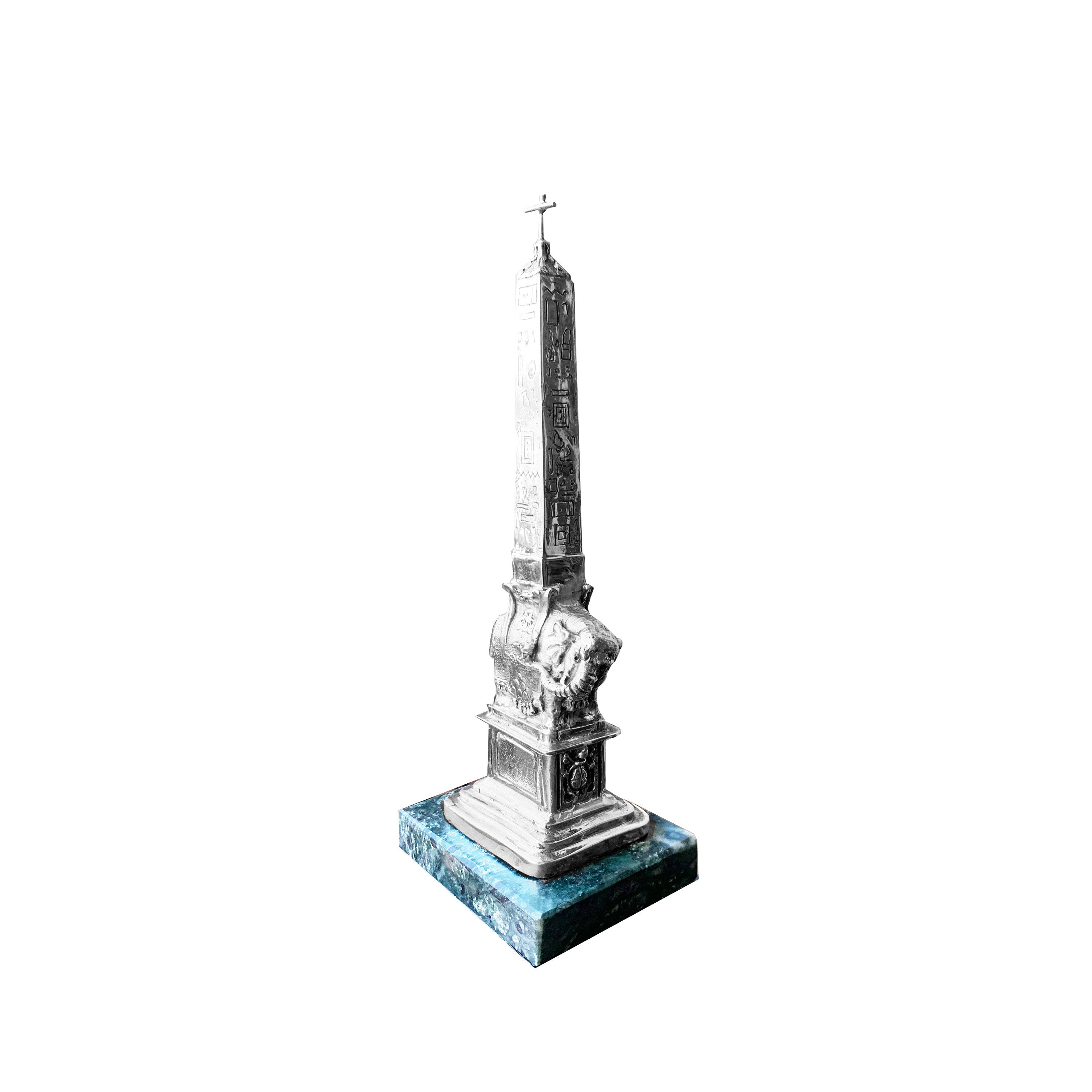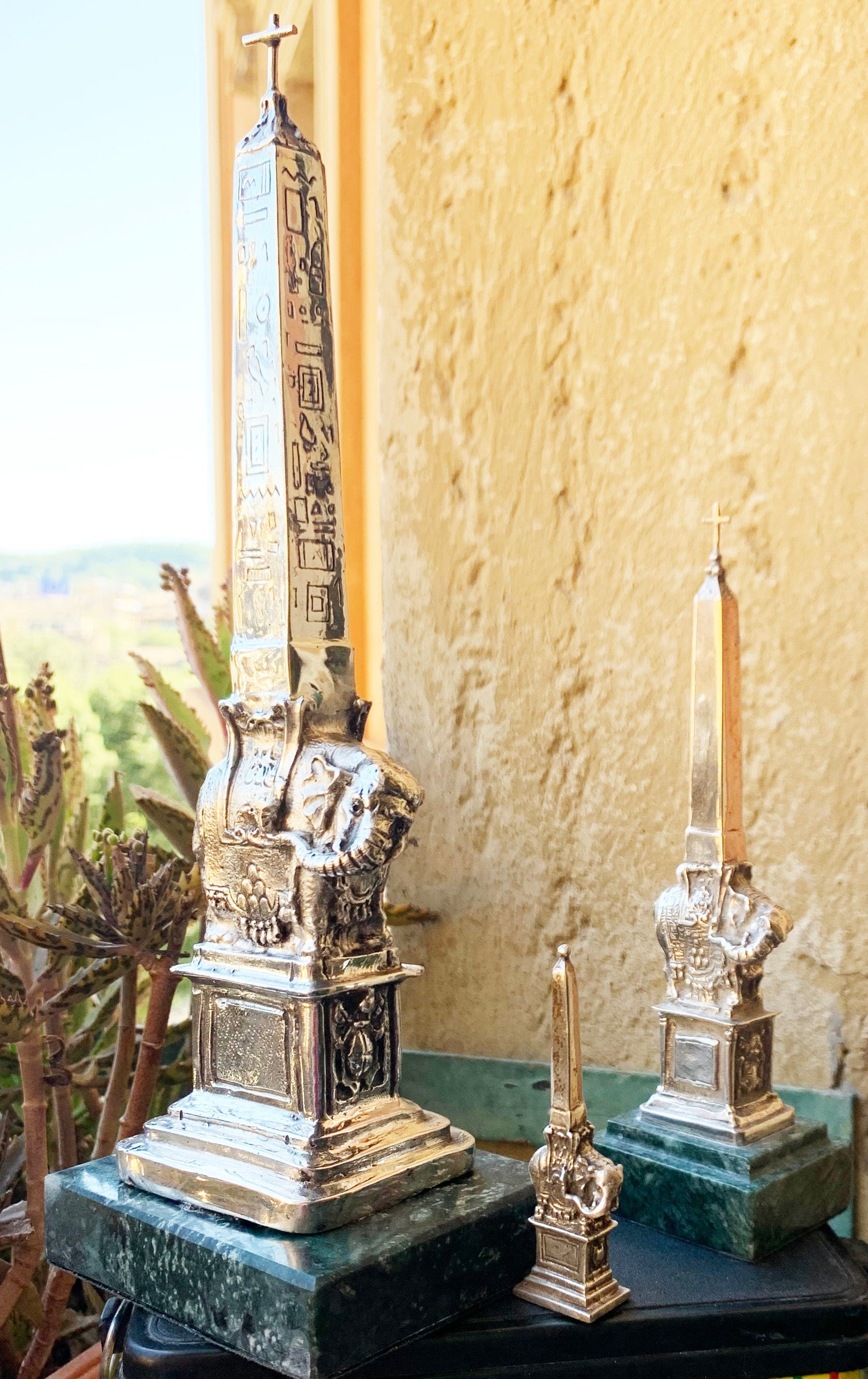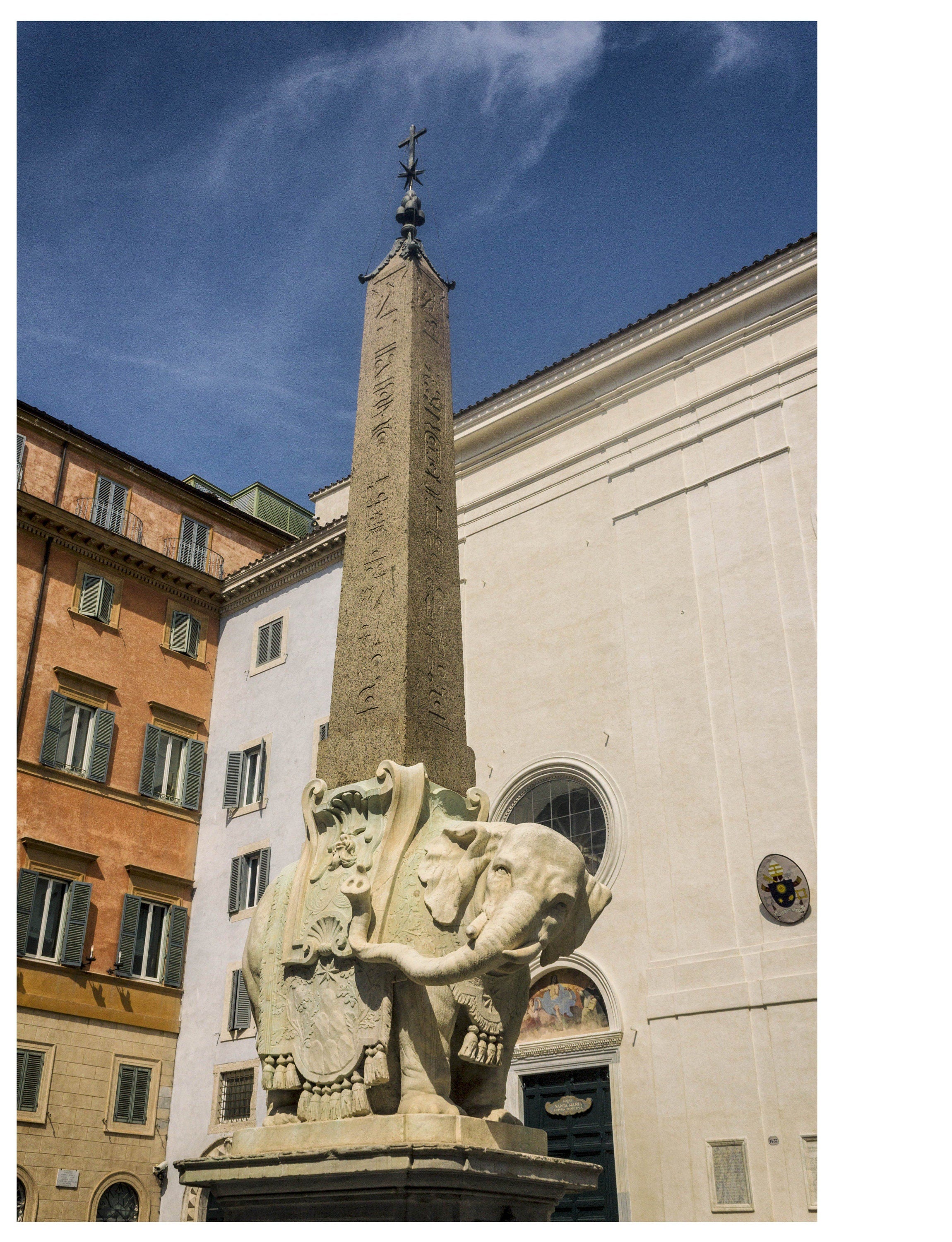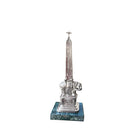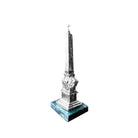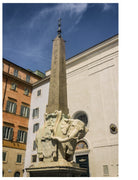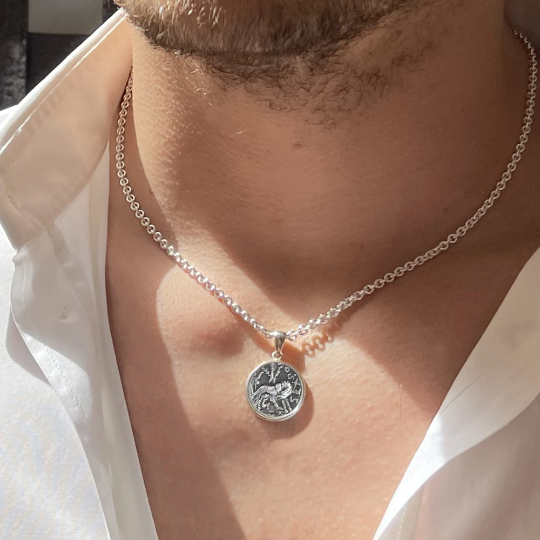Sterling silver statue reproducing Bernini's Minerva chick
• Handmade 100%
• Made in Rome, Italy
• Material : Sterling Silver
• Sculpture Lost Wax Casting
• Height : 16 cm (6.2 Inches)
• Length : 4 cm (1.5 Inches)
Regular price
$1,150.00
Unit price
/
Unavailable
Adjacent to the pantheon, in front of the Dominican church “Santa Maria Sopra La Minerva” (St.Mary Over Minerva), lies one of the most curious monuments of Rome, the so called “Pulcino della Minerva”, or in english – Minervas Chick. The brilliantly carved and very realistic elephant statue is a gem of famous Gian Lorenzo Bernini who designed it.
THE OBELISK
The elephant carries the smallest of the 11 Egyptian obelisks you can find in Rome on its back (18ft), an Obelisk said to have been brought from Sais, where it was built in the 6th century BC. In 1665 the small obelisk was found in the back yard of the Dominican monastery by St. Mary’s church. The church was actually not built on a Minerva temple as thought, but on part of the Iseum, an ancient temple dedicated to her Egyptian equivalent goddess Isis. Pope Alexander VII decided to have the obelisk raised in front of the church, and chose a design of an elephant, made by Bernini, because according to thought “…a strong mind is needed to support a solid knowledge”.
In the way, the pope rejected a design made by a Dominican priest, father Paglia, who wanted the obelisk in front of his church to be surrounded by statues of dogs, the nickname of the Dominican priests (“Domini Canes”, the lords dogs, as a symbol to their loyalty to god). It was rejected because the pope preferred the monument to remind the people of Minerva’s wisdom rather than praising the Dominican order.
The inspiration for the elephant came to Bernini from one of the first books to be printed in Italy, a 15th century novel by Francesco Colonna, “Hypnerotomachia Poliphili” (Poliphili’s Dream of the Strife of Love). The main character of the book meets an elephant made of stone carrying an obelisk. The illustration inside the book looks pretty much like Bernini’s design. It is believed that both Bernini and Pope Alexander VII have read the book. Bernini’s original design included an elephant and an obelisk, but father Paglia who’s design been rejected asked for it to be changed. He claimed that according to tradition no weight should rest vertically above an empty space, a common believe that was accepted by the pope who asked for a cube to be placed under the elephant’s belly to support the obelisk, just like the illustration in the book!
Bernini strongly opposed to the changing of his design. He argued that he had already placed heavy elements above spaces (Fountain of the Rivers in piazza Navona) and that father Paglia was trying to involve himself in a project that was not given to him, but the pope took father paglia’s side and asked for the cube to be placed under the elephants belly. Bernini desperately added a saddle to the elephant to hide the cube, but he could not hide the stoutly look the elephant got as a result. When the statue was revealed on July 1667 it was nicknamed by the Roman people the “Porcino della Minerva” (Minerva’s piglet).
Bernini however did not let father Paglia get away with the changing of his plan. Not
Sterling silver statue reproducing Bernini's Minerva chick

